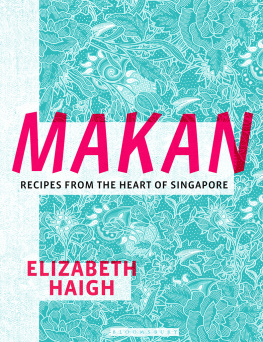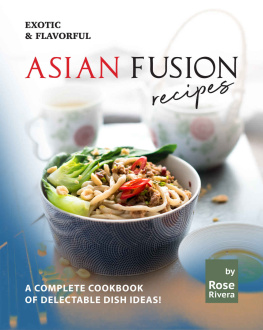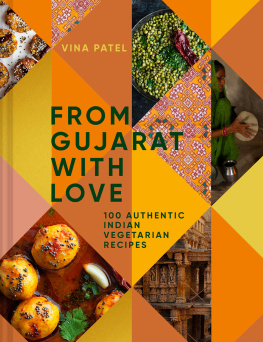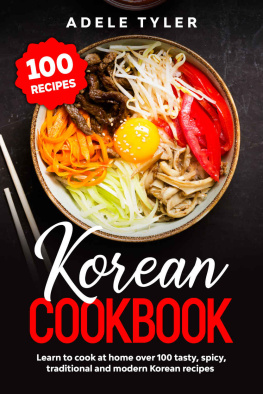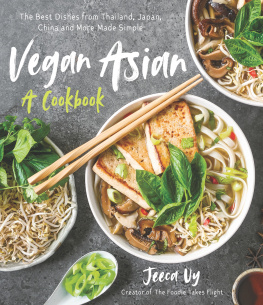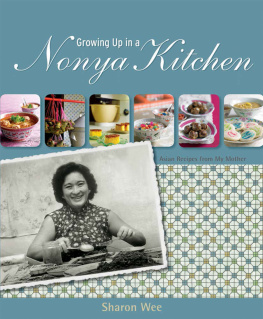

In my family, aside from each other, food is everything. Its our familys legacy. We talk about food constantly, from what we are going to be having for dinner while eating breakfast, or what my mum will be making this week. Its almost like living in a chaotic restaurant, so I guess it was a natural progression that I ended up becoming a chef.
I put in the hours and quickly progressed through the ranks until I became head chef of several restaurants, one of which was Pidgin in Hackney in London, where we were awarded a Michelin star in 2016. I was only 27. Straight away this gave me the drive and energy to focus on my own projects and ideas leading towards what I had neglected my heritage. So I wanted to open a kopitiam, or coffee shop (that also sells food).
In Singapore its very common to greet each other with Are you hungry? or Shall we go get some food? rather than Hello, how are you?. This is because we live by our stomachs and are very proud of it too. Singapore is a mecca for all sorts of cuisines. Its impossible to pinpoint where dishes have come from, so when people ask me what food is Singaporean, I simply reply: the delicious type. Southeast Asian cuisine is a proud mix of migrants and influences from all across Asia, and from afar, which fuses together to create something even greater than the original.
In the UK Ive found that a lot of people dont know where Singapore actually is, and if they do, it is usually because theyve been in the airport on their way to a connecting flight to somewhere else. Although the airport is very impressive, it isnt the real Singapore, nor does it represent the Singapore that I love and appreciate. Singapore is not all about the glam the butterfly gardens or designer shops. To me, the heart of Singapore is in its belly: the food.
Peranakan Chinese and Straits-born Chinese are the descendants of Chinese immigrants from the southern provinces who settled in Malaysia and Singapore. Intermarriage resulted in a distinctive culture of Straits-Peranakan whose language, clothing, art and cooking are celebrated to this day. The unique fusion food combines Chinese with influences from Malay, Indian, Thai, Indonesian, Dutch, Portuguese and, of course, English cuisine. Its simply the definition of island cuisine.
Peranakan men refer to themselves as Baba (Uncle), while women are Nonya (Auntie). Its no surprise the cuisine is called Nonya after the women: the matriarchal recipes are passed down from generation to generation and every woman is expected to master them. Indeed, a prospective bride has to prove to her potential mother-in-law that she can cook sufficiently well to ensure her son will be looked after properly following marriage. Im lucky my in-laws are based in Australia, so I didnt get as much of a grilling as my mother would have had.
These recipes are usually passed down orally, therefore you have to master them from memory. Its always a battle to get these secret family recipes, but I have long wanted to write them down properly, to log them and create a time-capsule of a cuisine that is so significant to many back home. Im ashamed to say that, like many Singaporeans, I really never saw the importance of learning or mastering these dishes because my mum cooked them so well. The same applies in Singapore as youre always guaranteed good food from a hawker only a stone's throw away. So why would you put yourself through the hassle of buying ingredients, prepping and cooking?

My Singaporean family, the Yeos.

The best way to eat durian, on a floor covered in newspaper.
Uncle Tony, Auntie Kim, my mother and me, aged 3.
Hawkers in Singapore are facing a problem. The hawker centres are home to the best food stalls in the world. These Aunties and Uncles, usually hunched-over leathery-skinned geriatrics, each specialise in one dish, and make and sell it until they can no longer hold the stall, then they retire. In addition to simply getting older, theres the stress of constantly rising rents and increasing food prices. Once gone their hawker knowledge, experience and passion is lost. They work incredibly hard so their children can get a good education and a proper job. The younger generation dont want to do the graft for such low marginal gains. When I told Uncle at my local kopitiam (coffee shop) in Singapore that I had opened up my own kopitiam in London, he thought I was mad. But you have a degree lah? Why bother? Go work in an office!
My father was temporarily stationed in Singapore when I was born, and we moved back to England when I was only a few months old. My sisters and I were brought up on predominantly Asian food because thats what my mother knew how to cook at the time. The cuisine in the early 1980s in the UK simply baffled her. Back home in Singapore she was the eldest of five and aged about 11 she was in charge of looking after and cooking for her family, while my grandparents worked. So, cooking for her was second nature and she loved to feed us all. When my parents married, she cooked my father a different meal every day for 2 years, without repeating anything and I thought changing a menu every week at a restaurant was hard! Her way of showing and showering us with love is through her cooking, not only to feed a primal demand, but to put such care into it that it always makes us smile and feel better.
Growing up in England, my sisters and I were fascinated by all the types of food that we had access to. Mum studied for City and Guilds qualifications for making wedding cakes and incredibly impressive sugar work. I used to be very naughty and would secretly eat her sugar flowers, which had taken her weeks to make. My sister Jane, being the youngest, always somehow managed to cover herself in flour. Her nickname was and still is chilli padi (birds eye chilli), meaning a pint-sized aggressive person. (Anyone who knows her knows this is true.) So, we were pretty much kept out of the kitchen. It was my mothers domain (I call it her organised chaos), and we would be scolded endlessly if we moved or touched anything without her knowing.
When my sisters and I went off to university we felt a huge displacement without our home-cooked food. Thats when I started to take cooking seriously and my passion for it grew: it was my only connection to home. I felt frustrated that I had taken my mothers cooking for granted and refused to settle for beans on toast for dinner while I was studying (although I do have a soft spot for beans on toast). I constantly bombarded my mum with emails, messages and calls, asking for step-by-step instructions on how to make my favourite dishes that would comfort me when I was feeling overwhelmed with my university workload. Im certain my sisters did the exact same thing. Most of the time I'd get a very brief response from my mum for example, for her crispy roast pork recipe it was prick skin and roast it.
However, if she did share her recipes with me, her instructions were rather difficult to follow and I faced many challenges along the way. It began with my having to translate hard-to-read handwritten notes, or convert measurements, and moved on to learning about the different

